Izu Peninsula: 12 Things to Do, Hot Springs, and Nature

The Izu Peninsula, home to famous hot spring resorts like Atami, is a nature-rich area near Tokyo. Learn the best things to do in Izu, from art museums and hot springs to gardens and even the Izu Shaboten Zoo, famous for its onsen-loving capybara!
The Izu Peninsula: A Nature and Hot Spring Resort Near Tokyo
The Izu Peninsula, located in Shizuoka Prefecture, is a mountainous area facing the ocean, known for its hot spring resorts and dramatic rock formations along its coastline.
Home to the Izu Peninsula Geopark and popular hot spring destinations such as Atami Onsen, Izu is a favorite getaway for Tokyoites seeking relaxation amid nature.
Read on to learn about exciting activities to enjoy in Izu besides catching a glimpse of the majestic Mount Fuji nearby.
Izu Peninsula: 12 Must-Visit Spots, Hotels, and Access
1. Izu Shaboten Zoo
2. Atami Onsen
3. Izusan Shrine
4. Shimoda City
5. Izu Panorama Park
6. Inatori Onsen
7. Kawazu: Early Blooming Cherry Trees
8. Atami Plum Garden
9. Shuzenji Temple
10. New York Lamp Museum and Flower Garden
11. Izu Teddy Bear Museum
12. Nirayama Reverberatory Furnace
Hot Spring Inns and Hotels in Izu
Transportation to and around the Izu Peninsula
1. Izu Shaboten Zoo
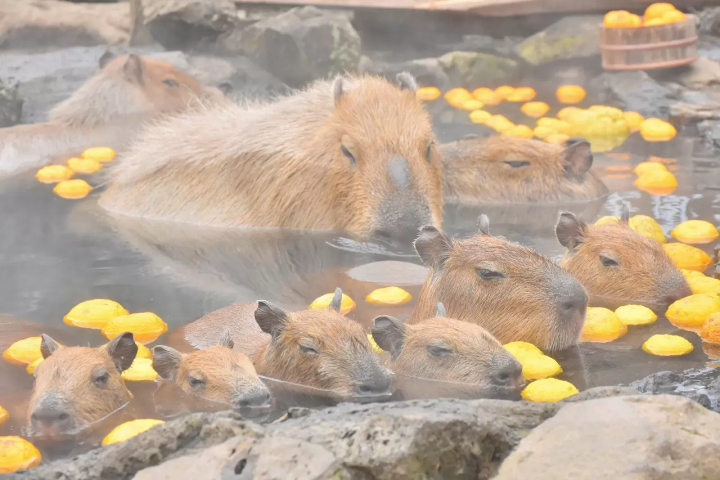
Photo by Pixta
Izu Shaboten Zoo attracts visitors from all over the world with its charming capybaras and their yearly winter hot spring bathing tradition. Since 1982, a keen zookeeper's discovery of the capybaras' love for warm water led to the introduction of a special hot spring, now a beloved winter custom. This heartening attraction allures visitors who come to see these friendly creatures unwind in the onsen between November and April.
Guests eagerly await the capybaras' endearing antics, such as balancing citrus fruits on their heads while relaxing in the waters. The zoo's open-air bath offers a joyous experience, not only for the capybaras but also for observers who might catch glimpses of the animals enjoying fruit and flowers in their aquatic retreat.
Izu Shaboten Zoo is home to more than one hundred species of animals, as well as beautiful botanical gardens. It's a great place to learn more about the natural world.
Atami Onsen
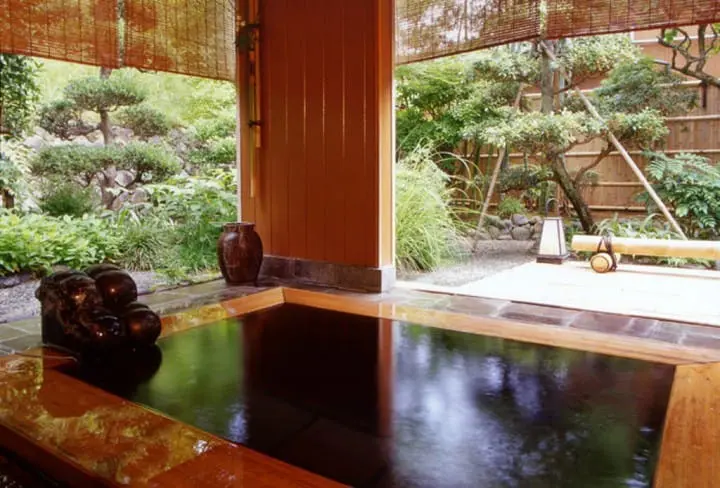
Atami Onsen is one of Japan's most famous hot spring resorts. The city boasts plenty of hotels and inns where guests can unwind with hot spring baths and spa treatments.
Atami is also home to the MOA Museum of Art, which attracts visitors from all over Japan and the world with its excellently curated exhibitions and splendid ocean views.
In the summer, Atami hosts its famous Atami Maritime Fireworks, an amazing display of colorful lights held regularly. There are even tours that offer visitors the chance to view the fireworks up close, from a cruise boat!
Read also
3. Izusan Shrine
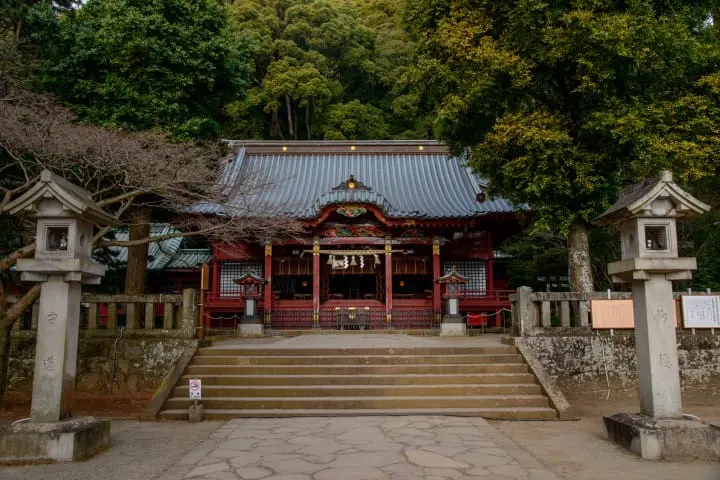
Photo by Pixta
The ancient Izusan Shrine, located in Atami, is thought to be the place where the name "Izu" originates. Besides being known for shogun Tokugawa Ieyasu's visits, it's a famous shrine said to answer prayers for good relationships.
From the prayer hall, you can overlook the nearby Sagami Bay from a high vantage point. The main shrine, called Izusan Shrine Hongu, is located higher up in the mountains.
Izusan Shrine
Location: Shizuoka, Atami, Izusan 708-1 Map
4. Shimoda City
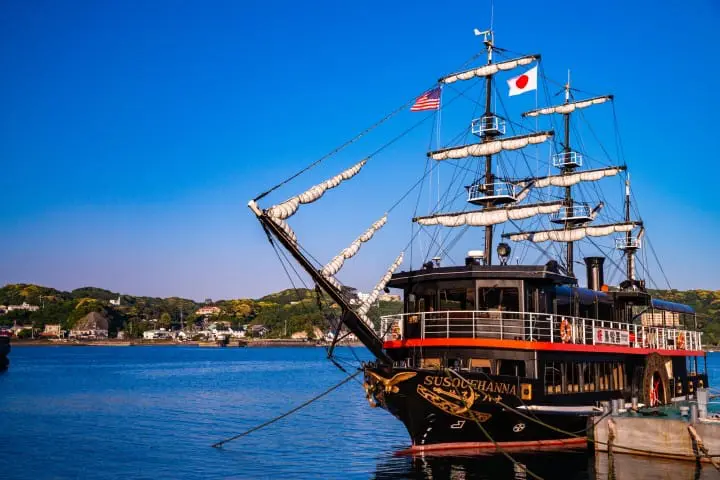
Photo by Pixta
Shimoda is a beautiful city located at the southern tip of the Izu Peninsula, renowned as the place where the the fleet American Commodore Matthew Perry entered Japan in the 19th century, ending Japan's period of isolation. This event is known as the "arrival of the black ships" and marked the beginning of Japan's commercial exchanges with the west.
Aside from the beautiful port views, you can enjoy a cruise on a boat modeled after Perry's black ships. On the return journey, you can imagine the scene when the black ships entered Shimoda. Shimoda Park's hydrangea festival and the beautiful Perry Road are also worth exploring.
5. Izu Panorama Park
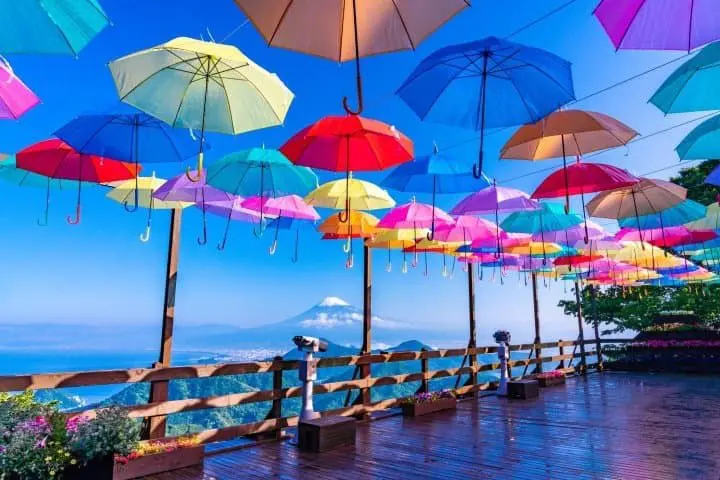
The Izu Panorama Park is a terrace resort located at a high altitude near Nagaoka Onsen. In addition to a dining area with beautiful views, you can enjoy a ropeway ride with breathtaking views of the surroundings.
In addition to its various outdoor activity spaces and the local product and souvenir shop Blue Market, the highlight of Izu Panorama Park is the Ao Terrace, where you can gaze at the splendid Mount Fuji and Suruga Bay.
Izu Panorama Park
Location: Shizuoka, Izunokuni, Nagaoka 260-1 Map
Official website: https://www.panoramapark.co.jp/en
Stay at a Hot Spring Ryokan near Izu Panorama Park
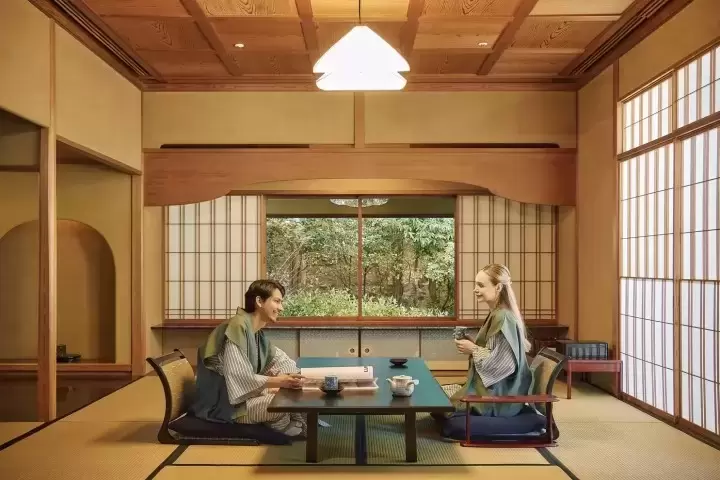
Picture courtesy of Sanyo-so
Sanyo-so is an exclusive and elegant ryokan nestled in the tranquil Izu Nagaoka Onsen, built on the former grounds of a tycoon's villa and renowned for its historical prestige, having hosted Japanese royalty and prime ministers.
All luxurious guest rooms, starting around 63.5 square meters for standard Western-Japanese suites, offer serene garden views and feature private bathing areas with their own free-flowing, natural hot spring water.
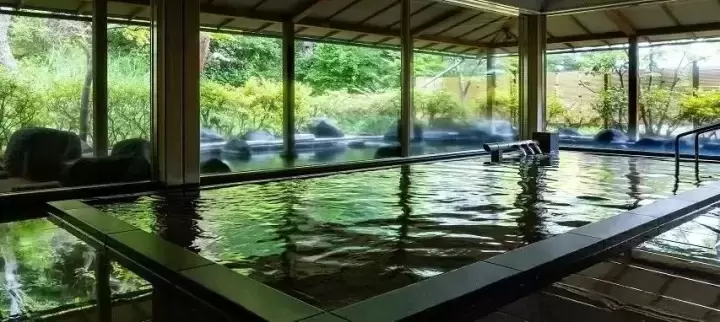
Picture courtesy of Sanyo-so
Guests can also enjoy the gentle, alkaline spring water—celebrated for its skin-beautifying properties—in a large communal bath with garden views, which includes a relaxing open-air option.
*The exclusive 5% discount is visible on the reservation page only after you select your dates.
6. Inatori Onsen
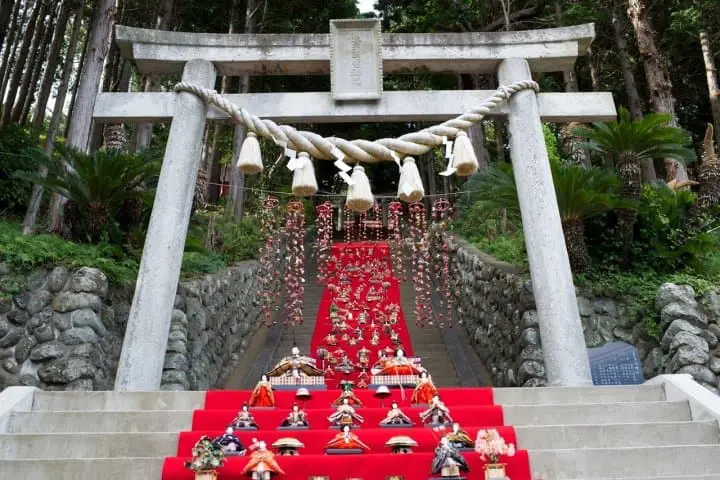
Inatori Onsen, situated in Higashi-Izu, is celebrated for its Festival of Hanging Hina Doll Decorations originating from the late Edo period. This charming hot spring town, a mere two-hour journey from Tokyo, showcases intricate handcrafted Hina dolls and hanging ornaments at various venues, including shrines and dining spots.
Running annually from January 20 to March 31, this festival embodies wishes for children's well-being. Residents of Inatori began crafting smaller dolls out of cloth to express their aspirations when elaborate displays were beyond reach. This local tradition is cherished, with dolls delicately arranged at sites like the staircase leading to Susanoo Shrine and Inatori Cultural Park Hina Hall, each embodying symbolic meanings.
It is easy to access the highlands of the Izu Peninsula Geopark from Inatori, and many visitors choose to stay overnight at a local hot spring inn to enjoy both sites over two days.
Read also
7. Kawazu: Early Blooming Cherry Blossoms

The city of Kawazu is where the Kawaza-zakura variety of cherry trees originates. This variety is known for blooming earlier than other sakura varieties, allowing visitors to enjoy cherry blossoms as early as February. Moreover, they have a blooming period of around one month!
The Kawazu Sakura Festival, held every year from early February to early March is a must-see for everyone who wishes to enjoy the pink hues of early cherry blossoms. The main venue is the riverbank along the Kawazu River, although you can spot the cherry trees as soon as you exit the Kawazu Station on the Izu Kyuko Line. At night, the row of cherry trees along the river is lit up, creating a lovely scenery.
Why not stay overnight at a hot spring ryokan inn in Kawazu to enjoy the early cherry blossoms and blissful onsen relaxation?
8. Atami Plum Garden
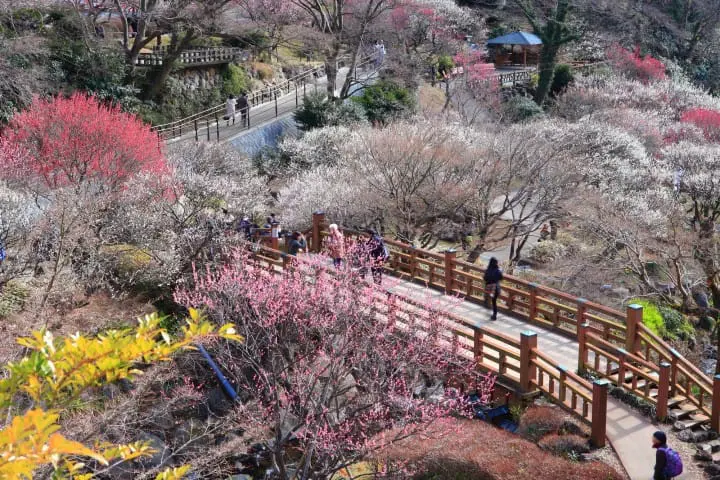
Photo by Pixta
The Atami Plum Garden is said to be the place where Japan's plum blossoms bloom earliest. Over 470 plum trees bloom yearly from late November to early December, including ancient plum trees that are over 100 years old!
The garden also hosts an autumn foliage festival from mid-November to early December. Plum blossoms and autumn foliage together are a double seasonal treat! Plus, there are hot springs in the garden.
Atami Plum Garden
Location: Shizuoka, Atami, Baiencho 8-11 Map
Read also
9. Shuzenji Temple
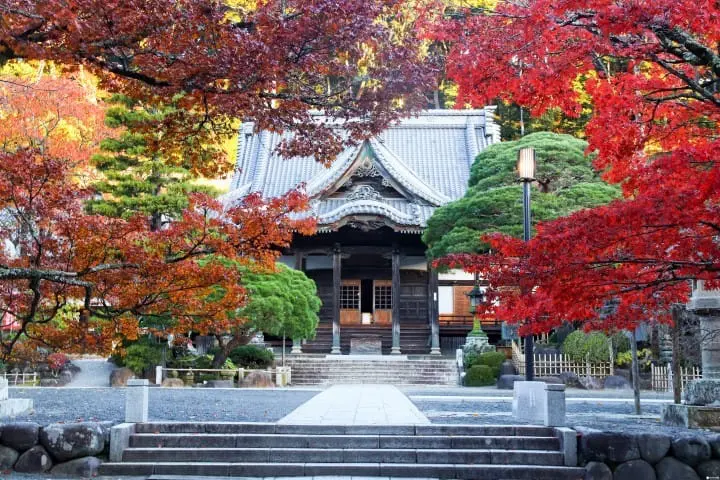
Shuzenji Temple is located in Shuzenji Onsen. This ancient temple is also famous for its autumn foliage. Its garden offers splendid views of red foliage, small bridges, clear streams, and a bamboo grove.
Shuzenji Temple
Location: Shizuoka, Izu, Shuzenji 964 Map
10. New York Lamp Museum and Flower Garden
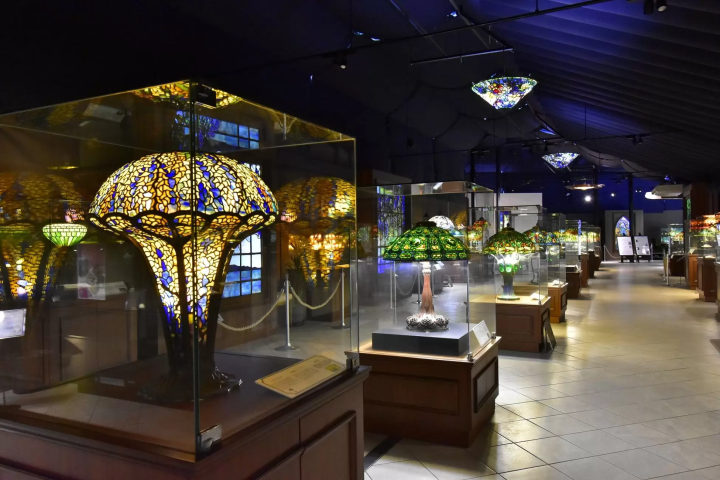
Picture courtesy of PR Times
The New York Lamp Museum and Flower Garden is an idyllic haven for stained glass art and flower lovers! Visitors can experience a tranquil atmosphere amidst art nouveau-themed exhibits, including stained glass windows and Tiffany lamps, harmonizing with a backdrop of seasonal flowers.
Noteworthy for its grand garden showcases during the rainy season in June, the museum dazzles with attractions like the Umbrella Sky exhibit, which paints pathways with vivid hues amid a selection of over 200 luscious hydrangea variations.
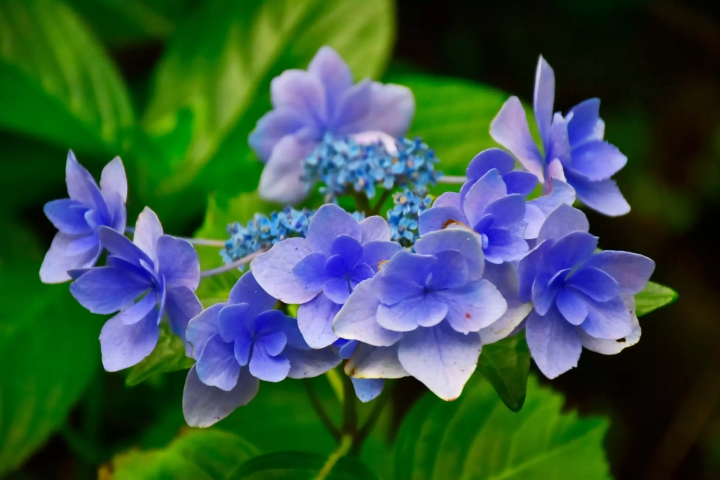
Picture courtesy of PR Times
A rare sight to behold, the museum boasts a splendid showcase of native Jogasaki Hydrangeas, each named after its coastal origin. Guests can marvel at a diverse range of stunning hydrangea breeds like the Annabel and Dance Party varieties, with traditional Japanese umbrellas in vivid purples and blues offering charming settings for unforgettable photos. This serene oasis seamlessly blends Western and traditional Izu culture, promising a delightful experience for all visitors.
11. Izu Teddy Bear Museum
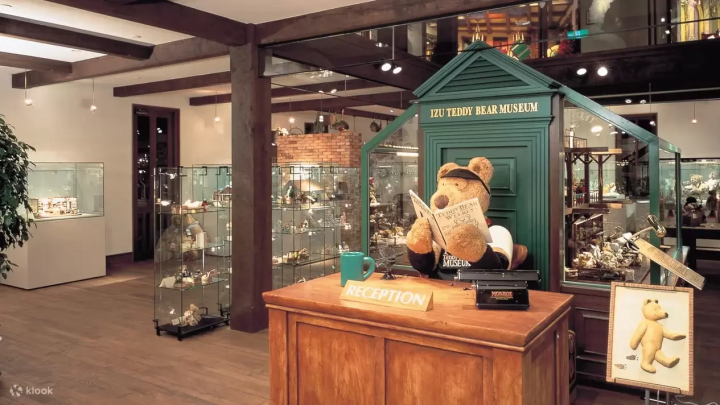
Picture courtesy of Klook
The Izu Teddy Bear Museum, located in the hot spring city of Ito, houses many precious antique teddy bears and welcomes you with teddy bears at the entrance. It's a healing spot in Izu besides the hot springs.
Izu Teddy Bear Museum
Location: Shizuoka, Ito City, Yawatano 1064-2 Map
12. Jogasaki Coast Hiking Trails
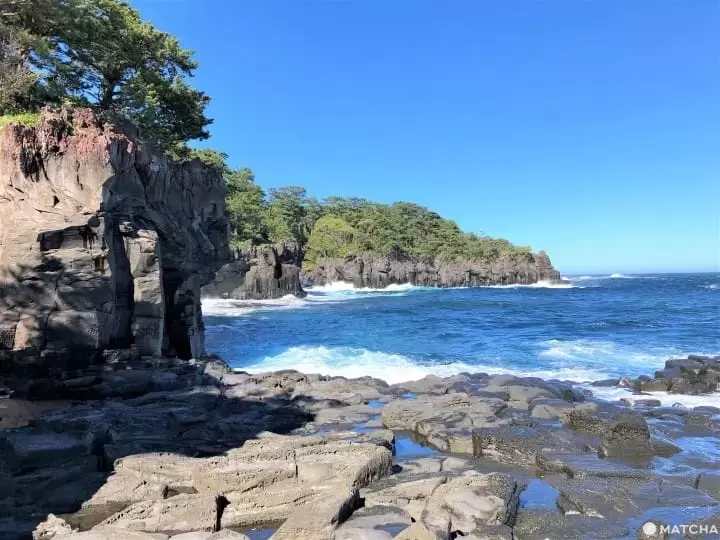
The rugged Jogasaki Coastline was formed four thousand years ago, when Mt. Omuro erupted and sent a massive lava flow cascading down the eastern coast of the Izu Peninsula. Molten rock surged into the sea, creating a jagged coastline filled with hidden coves and tide pools.
The Jogasaki Coast has become a nature reserve beside the sea with beautiful, well-maintained hiking trails. If you love the great outdoors, come explore Jogasaki! The views of the ocean, with the Izu Oshima Island at the horizon, and the refreshing shade of the greenery along the JOgasaki hiking trails will make for an unforgettable adventure!
Hot Spring Inns and Hotels in Izu

The Izu Peninsula is dotted with hot springs. Atami Onsen and Ito Onsen are in eastern Izu, Shuzenji Onsen is in central Izu, and Shimoda Onsen.
Each hot spring town has its charms. You can choose from the numerous high-quality, comfortable hot spring inns, ranging from traditional Japanese ryokans to Western-style modern hotels.
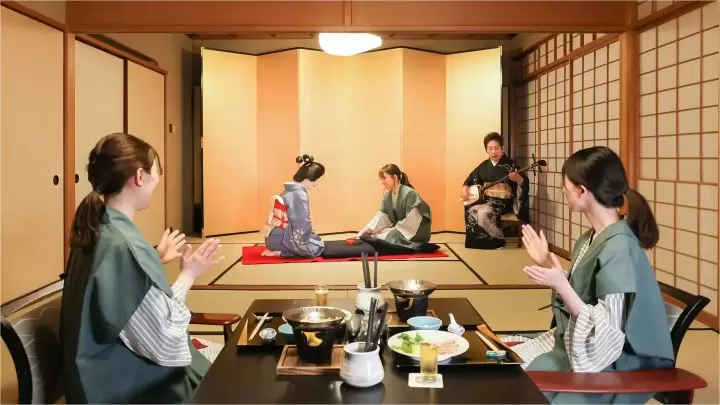
Picture courtesy of Sanyo-so
Sanyo'so, an elegant hot spring ryokan in Izu Nagaoka Onsen, offers unforgettable stays with its expansive garden, private onsen baths in each room, and cultural activities.
*The exclusive 5% discount is visible on the reservation page only after you select your dates.
Read also
The renowned Hoshino Resorts operates three hotels in the Izu Peninsula: Hoshino Resorts RISONARE Atami, Hoshino Resorts KAI Anjin, and Hoshino Resorts KAI Ito. Booking a room at one of these accommodations could be your inaugural Hoshino Resorts experience!
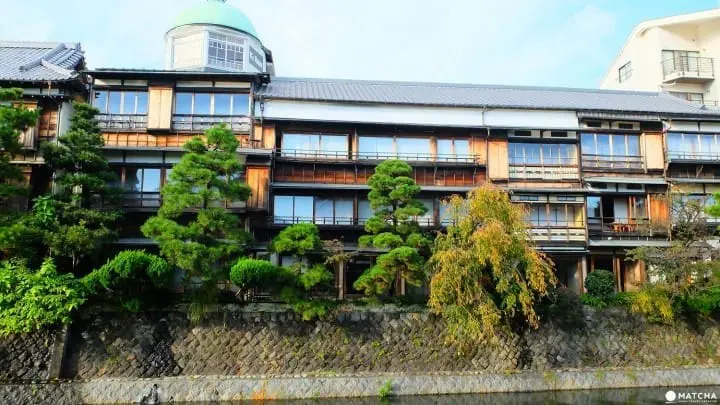
If you want to experience a hot spring inn but are on a budget, consider booking a stay at K's House Ito Onsen. The building is a century-old cultural property, and this ryokan also has a 24-hour hot spring large bath.
Even better, staying a night costs less than 4,000 yen! Click here to reserve a room on Booking.com: K's House Ito Onsen
How to Access the Izu Peninsula
Below is a brief overview of getting around the Izu Peninsula.
Travel to East Izu by Railway
From Tokyo Station, you can take the limited express Odoriko to reach Atami, Ito, or Izu Inatori. We especially recommend this route to JR Pass or JR Tokyo Wide Pass holders.
Use the Tokai Bus All Routes Ticket
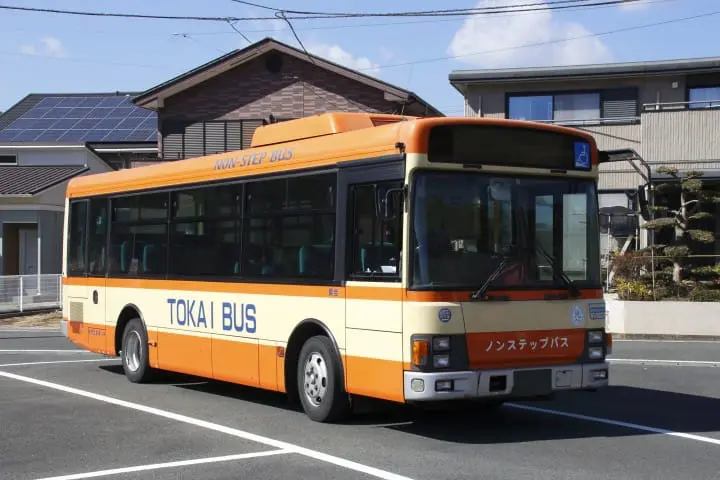
Photo by Pixta
The Tokai Bus has an extensive network of routes covering the entire Izu Peninsula, making it very convenient for those who want to explore the area thoroughly.
The Tokai Bus Unlimited Ride Pass is available in a 2-day pass (3,900 yen for adults/1,950 yen for children) and 3-day pass (4,600 yen for adults/2,300 yen for children). There are also tickets for specific regions like Ito City and the south Izu region, which can be used flexibly according to your travel needs.
Enjoy Exploring the Nature-Rich Izu Peninsula
This article provides a simple introduction to Izu and the Izu Peninsula. Interestingly, Izu and Hakone are entirely separate destinations. If you plan a hot spring trip in the Kanto region during the fall or winter, I highly recommend a three-day, two-night stay, soaking in different hot springs in Izu and Hakone. Please allow the hot springs to heal your mind and body!
Read also
Main image by Pixta
This is the official account of MATCHA's editorial department. Our articles feature useful travel information for visitors to Japan, from how-to guides to recommended places to visit.





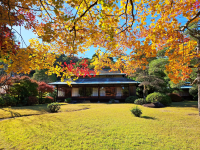






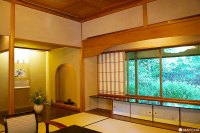




































![[Coupon Available] Attention Overseas Winter Sports Fans! Nagano's Sports Depot Has Evolved](https://resources.matcha-jp.com/resize/720x2000/2026/01/05-254819.webp)